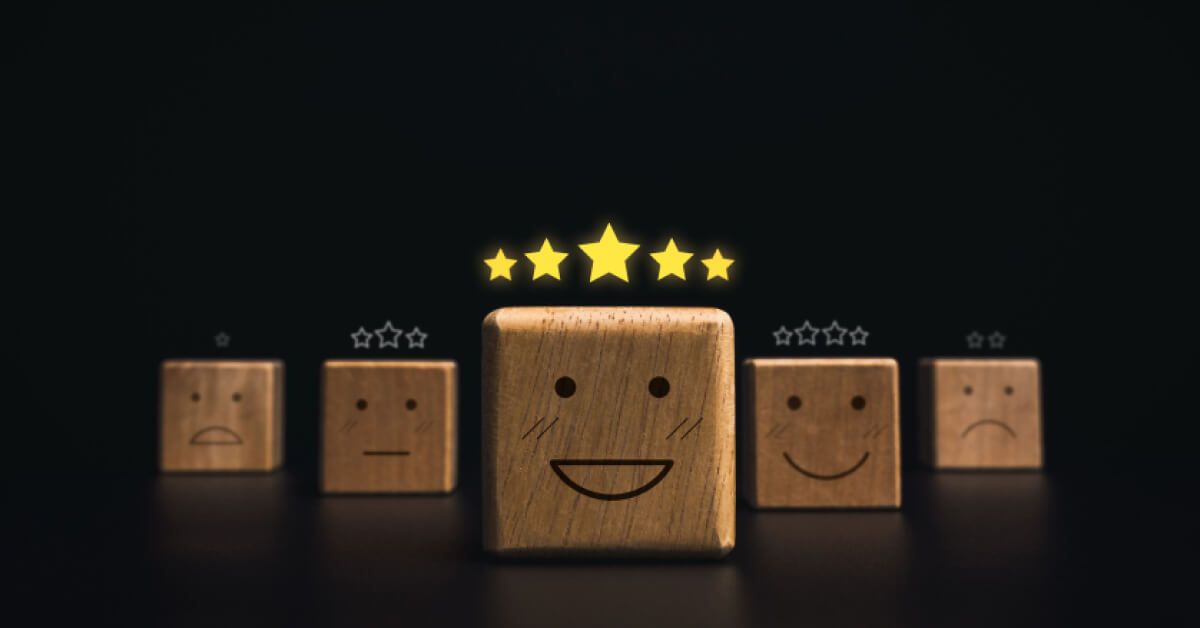What is team dynamics in the workplace: Tips & examples to improve it

Remember the excitement (and chaos) of your school play? There were the lead actors basking in the spotlight, the backstage crew hustling behind the curtains, the kid who proudly played the tree, and the director desperately trying to hold it all together.
Despite the mismatched costumes and the occasional forgotten lines, when everyone played their part, the show somehow came together—earning that final round of applause.
What if things went off-script? Missed cues, awkward silences, and the classic cardboard tree toppling over. Total disaster. That’s the power of team dynamics, they either hold everything together or let it all fall apart.
In the workplace, it’s no different. Success isn’t just about star performers; it’s about how every team member—whether front and center or behind the scenes—collaborates and supports one another.
Get the dynamics right, and it’s a standing ovation. Get it wrong, and it’s curtains down before the show actually ends.
TL;DR
What is team dynamics at work?

TL;DR
Team dynamics at work describe how team members interact, communicate, and influence each other, shaping collaboration and overall performance. They include roles, trust, communication styles, and informal relationships that impact cohesiveness and productivity.
Understanding and managing these dynamics is crucial for building high-performing, harmonious teams that align individual talents to achieve organizational goals effectively.
Team dynamics at work refer to the interactions, relationships, and behaviors among individuals within a team. It encompasses the way team members collaborate, communicate, and influence one another, impacting overall team performance and effectiveness. These dynamics include both formal aspects, such as roles and structure, and informal aspects, like interpersonal relationships and communication styles.
Team dynamics encompass various elements, including communication patterns, power structures, roles and responsibilities, conflict resolution strategies, and the level of trust and psychological safety within the team.
It's not limited to formal meetings or projects; it extends to informal interactions, watercooler conversations, and digital communication channels, all of which shape how a team functions.
In essence, team dynamics are the undercurrents that determine a team's effectiveness, productivity, and cohesiveness. Understanding and managing these dynamics are pivotal for organizations aiming to foster collaborative, high-performing teams and achieve their strategic objectives.
It's not just about assembling talented individuals; it's about orchestrating their interactions to create a harmonious and productive symphony in the workplace.
Factors that affect team dynamics
Team dynamics are influenced by various factors that shape how team members interact, collaborate, and perform. Understanding these factors is essential for building cohesive, productive teams and fostering a positive work environment. Here are five key elements that significantly impact team dynamics:
- Communication styles: The way team members share information, ideas, and feedback directly affects clarity, collaboration, and conflict resolution. Open and transparent communication fosters trust, promotes effective team dynamics, and prevents misunderstandings that could hinder progress.
- Leadership approach: A leader’s style—whether authoritative, democratic, or laissez-faire—sets the tone for team interactions. Strong leadership improves team dynamics by promoting inclusion, providing clear direction, and encouraging participation, which ultimately enhances team cohesion and productivity.
- Individual personalities and behaviors: Each team member brings unique traits, work ethics, and communication preferences. Managing diverse personalities is crucial to improve team dynamics, as it ensures harmony and leverages different perspectives for creative problem-solving.
- Organizational culture: The broader company culture influences team values, expectations, and behaviors. A positive culture that encourages team dynamics and communication fosters collaboration, respect, and innovation, while a toxic culture can undermine trust and engagement.
- Conflict resolution strategies: How a team handles disagreements affects its long-term success. Teams that address conflicts constructively create a supportive environment, which is key to maintaining effective team dynamics and ensuring smooth collaboration.
What is the importance of team dynamics in the workplace?
Team dynamics play a pivotal role in shaping the success and productivity of a workplace. Here's why they are crucial:
- Enhanced collaboration: Positive team dynamics promote seamless collaboration, where members pool their diverse skills and perspectives to solve complex problems and achieve shared goals.
- Improved communication: Healthy dynamics foster effective communication, reducing misunderstandings and conflicts while enhancing information sharing and clarity.
- Higher morale and motivation: Positive interactions and mutual support boost individual morale, job satisfaction, and motivation to excel, resulting in higher productivity.
- Effective conflict resolution: Teams with strong dynamics can address conflicts openly and constructively, leading to faster resolution and preserving team unity.
- Increased accountability: Defined roles and responsibilities enhance accountability, ensuring tasks are completed efficiently.
- Professional development: Interactions within a team offer opportunities for skill development, as individual team members learn from one another's expertise and experiences.
- Cultural understanding: Positive dynamics foster a culture of mutual respect and understanding, which is vital in diverse workplaces.
- Resilience to change: Teams with solid dynamics are better equipped to adapt to changes, as they possess strong communication and problem-solving skills.
- High-performance culture: Strong team dynamics contribute to an overall high-performance culture, where individual efforts align seamlessly to achieve exceptional outcomes.
- Attraction and retention of talent: Organizations with positive team dynamics are more attractive to potential employees, and they tend to retain talent due to a supportive and engaging work environment.
What are examples of team dynamics?

Certainly, here are five unique examples of successful team dynamics, each illustrating a different facet of how interactions among team members can impact overall performance and cohesion:
TL;DR
Examples of team dynamics include collaborative orchestras leveraging diverse strengths, constructive challenges fostering critical thinking, and synergy sparks boosting morale through enthusiasm.
Mentorship nexuses encourage growth and knowledge sharing, while inclusion initiators ensure all voices are heard. These dynamics showcase how individual roles and behaviors collectively shape team cohesion, creativity, and high performance in the workplace.
The collaborative orchestra
In a cross-functional project, team members with diverse skills and backgrounds collaborate like an orchestra. Each member contributes a unique instrument, harmonizing their efforts to create a masterpiece of innovation and problem-solving. This dynamic showcases the power of leveraging individual strengths for a collective outcome.
The constructive challenger
One team member consistently takes on the role of the "constructive challenger." They question assumptions, propose alternative solutions, and encourage critical thinking. While this might create healthy debate, it ultimately pushes the team to refine ideas and make well-informed decisions, highlighting the importance of diverse viewpoints.
The synergy spark
When a team's camaraderie is so strong that their enthusiasm becomes contagious, it creates a "synergy spark." This dynamic fosters a positive atmosphere where team members inspire and motivate one another, leading to heightened creativity, productivity, and a shared sense of purpose.
The mentorship nexus
A seasoned team member actively mentors and guides junior colleagues, forming a mentorship nexus. This dynamic not only accelerates the growth of newer members but also encourages knowledge sharing, building a cohesive team where skills and wisdom are passed down seamlessly.
The inclusion initiator
In a diverse team, an "inclusion initiator" takes the lead in ensuring everyone's voices are heard. They create a platform for introverted team members to contribute and facilitate discussions that embrace cultural perspectives. This dynamic underscores the importance of inclusivity and fostering a respectful team environment.
Key elements of team dynamics
Understanding the key elements of team dynamics is essential for fostering effective teamwork and achieving organizational goals. Strong team dynamics in the workplace create an environment where collaboration thrives, challenges are overcome, and productivity is maximized. Here are five core elements that shape the dynamics within a team:
- Shared goals and vision: A unified purpose aligns team efforts and ensures that every member works towards a common objective, strengthening team dynamics and collaboration.
- Trust and psychological safety: Trust among team members creates a safe space where individuals feel comfortable sharing ideas, taking risks, and admitting mistakes without fear of judgment, enhancing overall teamwork dynamics.
- Diversity of thought and skills: A team composed of individuals with varied backgrounds, experiences, and expertise promotes creativity and problem-solving, leading to richer discussions and more innovative solutions.
- Adaptability and flexibility: In fast-paced work environments, the ability of a team to adjust to changes, pivot strategies, and manage uncertainties is crucial for maintaining strong staff dynamics and achieving goals.
- Recognition and appreciation: Acknowledging individual and team achievements fosters motivation, reinforces positive behaviors, and strengthens the element of team dynamics that drives morale and engagement.
Team dynamics vs. group dynamics
Though often used interchangeably, team and group dynamics are distinct concepts. Understanding these differences helps leaders improve team dynamics at work and foster better collaboration.
Here’s what sets them apart.
| Aspect | Team dynamics | Group dynamics |
|---|---|---|
| Purpose and focus | What is team dynamics? It’s about coordinated interaction toward a shared goal. | Groups can exist without a clear common purpose. |
| Interdependence | Strong teamwork dynamics, where members rely on each other to succeed. | Members operate more independently, with minimal collaboration. |
| Accountability | Accountability is both collective and individual for outcomes. | Focuses on individual accountability, less emphasis on shared success. |
| Communication | Team dynamics meaning includes open, frequent communication to align efforts. | Groups communicate as needed, often more formal and limited. |
| Cohesion and trust | High trust and a strong team dynamic develop within teams. | Groups tend to remain more detached and formal. |
| Workplace application | Strong team dynamics at work drive synergy and innovation. | Groups suit tasks requiring less coordination and interdependence. |
How to recognize poor team dynamics
Not every team issue is obvious at first glance. Spotting the signs early is key to turning things around and fostering positive team dynamics.
Here are five telltale signs of dysfunction, and why understanding team dynamics matters.
- Frequent miscommunication and silos: If messages get lost, tasks are duplicated, or departments work in isolation, it suggests broken team dynamics and collaboration, undermining trust and efficiency.
- Low engagement or morale: When team members seem disengaged, avoid meetings, or stop contributing ideas, it signals they may feel undervalued or excluded—clear signs of poor dynamics.
- Unresolved conflict and tension: Lingering disputes, passive-aggressive remarks, or favoritism indicate deeper issues. Knowing what are team dynamics helps leaders address conflict constructively and rebuild harmony.
- Lack of accountability: If no one owns mistakes or responsibilities are routinely shirked, team performance suffers. Strong dynamics foster ownership and collective problem-solving.
- Dominance or exclusion: When one voice dominates or others feel ignored, it erodes psychological safety and stifles innovation. Balanced, positive team dynamics ensure everyone has a voice.
What are the 3 categories in team dynamics?

Team dynamics can be broadly categorized into three main categories, each representing different aspects of how individuals interact and collaborate within a team:
TL;DR
Team dynamics fall into three categories: task-related dynamics, focusing on roles, communication, and conflict resolution; social dynamics, emphasizing trust, inclusion, and team identity; and individual dynamics, highlighting motivation, skills, and personal growth.
Balancing these aspects fosters effective collaboration, strong relationships, and continuous improvement, creating a healthy, high-performing team aligned with organizational goals.
1. Task-related dynamics: This category focuses on how team members work together to achieve the team's goals and complete tasks. It includes aspects that improve team dynamics such as:
- Roles and Responsibilities: Clear delineation of roles ensures everyone knows what is expected of them.
- Communication: Effective information sharing and active listening are crucial for task accomplishment.
- Decision-making: How decisions are made, whether collaboratively or through a leader, impacts team effectiveness and cohesiveness.
- Conflict management: Addressing conflicts constructively ensures that disagreements do not hinder progress.
2. Social dynamics: Social dynamics pertain to the relationships and interactions among team members. Key components include:
- Trust and cohesion: Building trust fosters a supportive environment where team members collaborate effectively.
- Team identity: A sense of belonging and shared purpose enhances team cohesion.
- Interpersonal relationships: Building positive relationships boosts communication and teamwork.
- Diversity and inclusion: Acknowledging and respecting individual differences contributes to a harmonious team.
3. Individual dynamics: Individual dynamics focus on each team member's contributions and growth. This category includes:
- Motivation and engagement: A motivated, team leader contributes actively and productively to achieve goals.
- Skill and expertise: Utilizing each member's skills optimizes task performance.
- Personal development: Encouraging individual growth benefits both the team and the individuals.
- Recognition and feedback: Acknowledging achievements and offering constructive feedback promotes continuous improvement.
Team dynamics vs. team culture: What’s the difference?
It’s easy to confuse team dynamics and team culture—they often overlap, but they’re not the same. Understanding the distinction helps leaders nurture stronger teams and address problems more effectively.
Here’s how they differ, with real-world insights.
| Aspect | Team dynamics | Team culture |
|---|---|---|
| Definition | The team dynamics definition refers to interaction patterns and relationships within a group. | Shared values, norms, and expectations shaping the team’s identity over time. |
| Behaviors observed | Seen in team behavior in the workplace, like discussions, support, or conflict. | Reflected in attitudes toward work, inclusion, and leadership style. |
| Elements at play | Includes trust, roles, power balance—core elements of team dynamics. | Influenced by history, mission, and broader organizational values. |
| Impact of problems | Poor or bad team dynamics show as team dysfunction signs like cliques or disengagement. | A toxic culture perpetuates negative work team dynamics. |
| How to improve | Strengthen workplace communication patterns and use team collaboration strategies. | Align values and model behaviors that foster trust and respect. |
15 Common challenges in achieving positive team dynamics

Achieving positive workplace dynamics can be challenging due to various factors that can impede collaboration and cohesiveness. Here are some common challenges:
TL;DR
Achieving positive team dynamics is often hindered by communication barriers, trust issues, role ambiguity, cultural differences, and inadequate leadership. Challenges like burnout, unequal participation, silos, and skill gaps further strain collaboration and morale.
Recognizing and addressing these obstacles—especially in remote or diverse teams—is crucial to fostering trust, accountability, and effective, high-performing workplace relationships.
- Communication barriers: Ineffective communication, misunderstandings, and lack of transparency can hinder information flow and lead to confusion.
- Conflict and disagreements: Conflicts arising from differences in opinions, personalities, or work styles can disrupt team harmony if not managed properly.
- Lack of trust: Insufficient trust among team members can hinder open communication and collaboration, affecting productivity.
- Unequal participation: When some group members dominate discussions while others remain passive, it can lead to imbalance and diminished collective decision-making.
- Role ambiguity: Unclear roles and responsibilities can lead to confusion, overlap, or neglect of important tasks.
- Cultural differences: In diverse teams, cultural differences in communication styles, norms, and expectations may cause misunderstandings.
- Resistance to change: Teams may resist new ideas, technologies, or processes, hindering adaptability and progress.
- Burnout and stress: High-pressure environments or unrealistic workloads can lead to burnout, affecting both performance and morale.
- Lack of accountability: Without clear accountability, tasks may be left unfinished, leading to frustration and hampered progress.
- Turnover and transition: Frequent changes in team composition due to turnover or organizational shifts can disrupt team dynamics.
- Inadequate leadership: Poor leadership can result in unclear direction, insufficient support, and a lack of motivation among team members.
- Silos and lack of collaboration: Departments or individuals working in isolation can hinder cross-functional collaboration and knowledge-sharing.
- Remote work challenges: Virtual teams may face challenges in communication, alignment, and maintaining a sense of camaraderie.
- Limited recognition and appreciation: When employees feel their contributions go unnoticed or undervalued, motivation and engagement can decline, straining team morale.
- Skill gaps within the team: Uneven skill levels or lack of necessary expertise among team members can create dependencies, inefficiencies, and frustration, impeding overall team performance.
Impact of remote work on team dynamics
Remote work has transformed how teams interact, collaborate, and build trust. While it offers flexibility, it also brings unique challenges to maintaining healthy team dynamics. Here are six ways remote work impacts teams.
- Communication gaps: Without face-to-face interaction, it’s easier for messages to be misunderstood or missed, leading to frustration and misalignment if not addressed proactively.
- Weakened personal connections: The casual chats and informal bonding moments that strengthen relationships in an office setting are harder to replicate virtually, leaving some employees feeling isolated.
- Uneven participation: In virtual meetings, it’s common for a few voices to dominate while others stay silent, which can hurt inclusivity and collaboration.
- Trust and accountability challenges: Leaders and peers may struggle to gauge engagement and productivity, sometimes leading to micromanagement or misplaced assumptions.
- Blurring of work-life boundaries: Working from home can lead to burnout as team members struggle to disconnect, impacting both morale and long-term performance.
- Adaptation of collaboration tools: On the upside, remote work pushes teams to adopt better digital tools and workflows, fostering innovation in how they connect and share ideas.
How leadership style affects team dynamics
Leadership shapes the way teams interact, solve problems, and grow together. The right approach can inspire trust and collaboration, while the wrong one can disrupt even the strongest group. Here’s how leadership style influences workplace team dynamics in meaningful ways.
- Setting the tone for communication: Leaders influence team dynamics and communication by modeling openness, listening, and respect. A leader who encourages dialogue creates a safe space for everyone to share, while a closed-off leader can stifle input and discourage participation.
- Decision-making and inclusion: Leaders who involve their team in decisions strengthen trust and engagement. Autocratic styles often alienate employees, creating fractured staff dynamics and low morale.
- Conflict resolution and trust-building: Leaders who address conflicts calmly and fairly set the standard for positive workplace team dynamics. Avoiding issues or showing favoritism can escalate tension and weaken relationships.
- Motivation and accountability: Supportive leaders inspire accountability without micromanaging, which keeps everyone aligned and motivated. Harsh or absent leadership often results in confusion, finger-pointing, and poor team dynamics examples.
- Fostering growth and collaboration: Great leaders champion professional development and encourage cross-functional collaboration. This not only improves staff dynamics, but also ensures individuals feel valued and connected to the bigger picture.
Top 5 checklist for achieving positive team dynamic at your workplace

Achieving positive team dynamics requires a systematic approach. Here's a top 5 checklist to foster a harmonious and productive team environment:
- Clear communication channels: Establish transparent communication methods, ensuring that information flows freely among team members. Regular team meetings, digital collaboration tools, and open-door policies promote clarity and prevent misunderstandings.
- Shared goals and values: Align the team around common objectives and values. Clearly define the team's purpose and how individual contributions contribute to the larger mission, fostering a sense of unity and direction.
- Diverse skill utilization: Acknowledge and leverage each member's unique strengths and expertise. Assign tasks based on skill sets, encourage knowledge sharing, and provide opportunities for cross-training to enhance overall team capabilities.
- Conflict resolution strategies: Develop a framework for addressing conflicts constructively. Encourage open discussions, active listening, and empathy while addressing disagreements promptly to prevent negative emotions from festering.
- Feedback and recognition culture: Foster a culture of continuous improvement by providing regular feedback and acknowledging achievements. Constructive feedback helps team members refine their skills, while recognition boosts morale and reinforces positive behavior.
25+ Team dynamics questions you should ask your employees

Engaging employees in discussions about team dynamics can uncover valuable insights and promote a healthy work environment. Here are 27 team dynamics questions to consider asking your employees:
TL;DR
Asking targeted team dynamics questions helps uncover insights on communication, trust, inclusion, leadership, and collaboration. These 27 questions explore how employees perceive roles, psychological safety, adaptability, and alignment with goals.
They also assess strengths, barriers, and opportunities to improve teamwork, fostering a more supportive, engaged, and high-performing team culture rooted in openness and continuous improvement.
- How would you describe the communication within our team? Is there room for improvement?
- What role do you feel you play within the team? Do you think your strengths are effectively utilized?
- Are there any conflicts or challenges within the team that you think need addressing?
- Do you feel that all team members are treated fairly and with respect?
- What strategies do you think could enhance collaboration and cooperation among team members?
- Are there any barriers that hinder your ability to contribute effectively to the team?
- How do you think our team handles disagreements or differing opinions?
- Do you think there's a balance between task-oriented discussions and relationship-building interactions?
- What feedback mechanisms do you find effective for addressing concerns within the team?
- Are there any team rituals or practices that positively impact our dynamics?
- How do you perceive the leadership style within our team? Does it foster engagement and motivation?
- Do you feel that you have a voice in team decisions and that your input is valued?
- Are there opportunities for skill development and learning within our team?
- How well do we adapt to changes or challenges as a team?
- Is there a sense of camaraderie and mutual support among team members?
- What can we do to ensure that diversity and inclusion are respected and embraced within the team?
- Do you feel that the team's goals align with the organization's larger mission and vision?
- In your own words, what is team dynamics and how does it show up in our daily interactions?
- Can you share your understanding of team dynamics meaning, and how it affects our performance?
- How would you define dynamic team in the context of our work, and do you feel we meet that definition?
- Are there ways our teamwork dynamics could improve to help everyone contribute more effectively?
- How do you observe the dynamics of the group shifting during high-pressure situations?
- What behaviors or attitudes strengthen our teamwork, and which ones weaken it?
- Do you feel psychological safety is strong enough that everyone can speak up without fear of judgment?
- How well does the team celebrate successes, and how could we improve recognition?
- Are team roles and responsibilities clear to you? If not, where is clarification needed?
- Do you feel we have the right balance of structure and flexibility to be effective as a team?
How can employee survey tools help in improving your team dynamic?

Employee survey tools are invaluable resources that can significantly enhance team dynamics by providing insights, fostering open communication, and guiding targeted improvements. Here are five creative ways these tools contribute:
- Insightful data collection: Employee survey tools gather quantitative and qualitative data on team dynamics, offering a comprehensive view of the team's strengths and areas for improvement. The analysis of survey responses unveils patterns, facilitating informed decisions and targeted interventions.
- Anonymous feedback channels: Survey tools allow employees to share candid feedback anonymously. This encourages team members to express concerns, ideas, and suggestions without fear of reprisal, leading to honest insights into team dynamics that might otherwise go unnoticed.
- Benchmarking and progress tracking: By conducting surveys at regular intervals, teams can benchmark their progress and track changes in dynamics over time. This data-driven approach helps measure the effectiveness of interventions and identifies trends, aiding continuous improvement efforts.
- Customized action plans: Survey insights guide the creation of tailored action plans. These plans address specific challenges highlighted in the survey results, such as enhancing communication, addressing conflicts, or promoting diversity and inclusion. This targeted approach increases the likelihood of impactful change.
- Catalyst for open dialogues: Survey results spark meaningful discussions among team members and leadership. Sharing survey findings in team meetings creates a platform for open conversations about team dynamics, enabling collaboration on solutions and fostering a culture of transparency.
- Enhanced employee engagement: Involving employees in the survey process itself promotes engagement. When employees see their opinions valued and changes implemented based on their feedback, it boosts their morale, loyalty, and sense of ownership over team dynamics.
Conclusion
Team dynamics play a critical role in shaping collaboration, productivity, and overall workplace success. Strong, positive team dynamics lead to improved communication, trust, and cohesive teamwork, ultimately driving organizational growth. However, achieving and maintaining these dynamics requires continuous effort and insight into team behaviors and interactions.
This is where CultureMonkey becomes an invaluable tool. By offering real-time feedback, employee engagement surveys, and data-driven insights, CultureMonkey helps organizations identify strengths and areas of improvement within their teams. It empowers leaders to make informed decisions, promote open communication, and create an environment where positive team dynamics thrive.
With CultureMonkey, you can easily monitor team morale, resolve conflicts proactively, and foster a culture of trust, inclusion, and collaboration. Investing in tools like CultureMonkey not only strengthens team dynamics but also enhances employee engagement, retention, and overall workplace satisfaction—paving the way for long-term success.
Summary
The blog on team dynamics explores how interactions, behaviors, and relationships among team members influence collaboration, trust, and performance. It highlights the importance of fostering positive team dynamics to drive engagement, innovation, and cohesion, while addressing challenges like poor communication and conflict.
The blog offers actionable tips to improve trust, clarify roles, and promote inclusion. By understanding and managing team dynamics, organizations can build high-performing, harmonious teams that align individual strengths with shared goals for long-term success.
FAQ
1. What is the meaning of team dynamics?
Team dynamics refer to the patterns of interactions, relationships, and behaviors within a team that influence how members collaborate and perform. It encompasses communication styles, leadership influence, individual roles, and group cohesion. Strong team dynamics foster productivity, trust, and innovation, while poor dynamics can hinder collaboration and affect overall team success. Understanding team dynamics is key to building high-performing teams.
2. What are the 3 categories in team dynamics?
The three categories in group dynamics are 1. task-related dynamics, focusing on roles, responsibilities, goal achievement, time management, and task efficiency; 2. social dynamics, emphasizing trust, communication, collaboration, empathy, and team cohesion; and 3. individual dynamics, covering personal motivation, skills, continuous learning, growth, and development. Balancing these categories builds strong teamwork, fosters innovation, and ensures long-term productivity and success.
3. What are the 5 elements of group dynamics?
The five essential elements of group dynamics are communication, promoting transparency, clarity, and open collaboration; leadership, providing vision, guidance, and continuous motivation; roles and responsibilities, clearly defining individual tasks to ensure accountability, efficiency, and productivity; cohesion, fostering trust, unity, and strong relationships; and conflict resolution, effectively managing disagreements to maintain harmony, boost teamwork, and improve overall group performance.
4. What are the 4 stages of group dynamics?
The four stages of group dynamics, based on Bruce Tuckman’s model, are Forming, where team members come together and build initial relationships; Storming, marked by conflicts as roles, expectations, and goals are clarified; Norming, where collaboration improves, team norms are established, and trust is strengthened; and Performing, where the team works efficiently with strong cohesion, trust, and shared objectives.
5. What are poor team dynamics?
Poor team dynamics occur when negative behaviors, miscommunication, and lack of trust hinder collaboration and productivity. Unlike positive team dynamics, which encourage cohesion and success, poor dynamics lead to conflicts, disengagement, and inefficiency. Understanding team dynamics meaning is essential to identify issues such as unclear roles, low morale, and ineffective communication that can disrupt teamwork and overall performance.
6. What are examples of team dynamics?
Team dynamics examples include effective communication, where team members actively listen and collaborate, and conflict resolution, where disagreements are handled constructively. Workplace dynamics examples also involve leadership influence, role clarity, and trust-building. Positive team dynamics boost productivity and morale, while negative ones—like poor communication or power struggles—can hinder performance and cohesion. Strong team dynamics lead to lasting success.
7. What causes poor team dynamics?
Poor teamwork dynamics often stem from unclear roles, lack of trust, poor communication, and unresolved conflicts. Without understanding the team dynamic meaning, teams struggle to collaborate effectively. Leadership plays a role, too; when leaders fail to nurture trust and respect, it harms the group. Recognizing the importance of team dynamics helps address these root causes early.
8. How do team dynamics affect performance?
Strong team dynamics at work enhance productivity, creativity, and morale, while poor dynamics breed conflict, disengagement, and inefficiency. The team dynamic shapes how members interact, resolve problems, and support each other. The definition team dynamics highlights how individual behaviors influence collective output, proving the importance of team dynamics in achieving organizational goals and sustaining high performance.
9. Can team dynamics improve with feedback tools?
Yes—feedback tools help assess and improve team dynamics in the workplace by fostering transparency, highlighting blind spots, and encouraging open dialogue. Teams that regularly reflect and adapt can transform their teamwork dynamics. Such tools allow leaders to explain team dynamics, measure progress, and reinforce the importance of team dynamics as part of everyday operations.
10. How does CultureMonkey support team development?
CultureMonkey enhances team dynamics at work by gathering actionable feedback, uncovering hidden issues, and aligning teams with organizational goals. It helps employees understand the team dynamic meaning, track progress, and improve collaboration. By measuring sentiment and engagement, it validates what is team dynamics definition is—how individuals interact to form a high-performing, cohesive unit.



